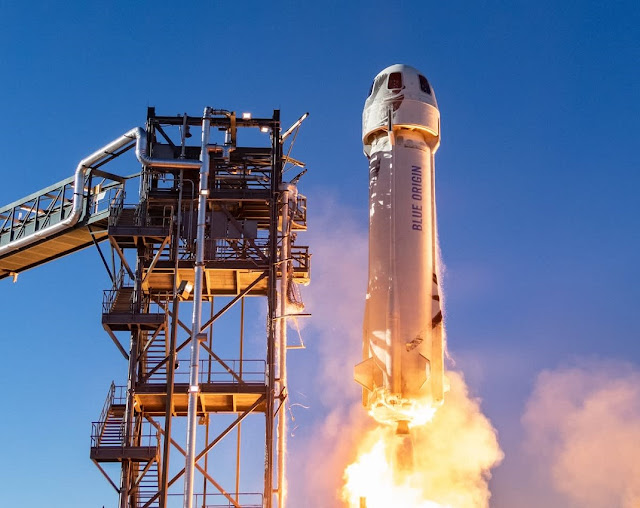Back on May 8th, when
I posted about a rule drop from BATFE on the proposed rule
changes, it seems that was an unofficial drop from them. 80% Lowers
notified everyone by email yesterday that the NPRM (Notice of Proposed
Rulemaking) was just released yesterday, so I downloaded that one and compared
it to what I have. I didn't go page by page, but everything I've been
looking at hasn't changed. If you missed it, the NPRM can be found here.
I'm going to excerpt a small portion of the alleged purposes of the regulation
and the section that I'm most concerned about, which is just what constitutes
"readily converted," which they specifically say they want to clarify.
Excerpt from page 1 of 115.
SUMMARY:
The Department of Justice (“Department”) proposes amending
Bureau of Alcohol, Tobacco, Firearms, and Explosives (“ATF”) regulations to
provide new regulatory definitions of “firearm frame or receiver” and “frame
or receiver” because the current regulations fail to capture the full
meaning of those terms. The Department also proposes amending ATF’s
definitions of “firearm” and “gunsmith” to clarify the meaning of those
terms, and to provide definitions of terms such as “complete weapon,”
“complete muffler or silencer device,” “privately made firearm,” and
“readily” for purposes of clarity given advancements in firearms
technology. Further, the Department proposes amendments to ATF’s regulations
on marking and recordkeeping that are necessary to implement these new or
amended definitions. [Bold added: SiG]
And here's where they clarify the meaning of “readily.”
Readily. A process that is fairly or reasonably efficient, quick, and
easy, but not necessarily the most efficient, speedy, or easy process.
Factors relevant in making this determination, with no single one
controlling, include the following:
(a) Time, i.e., how long it takes
to finish the process;
(b) Ease, i.e., how difficult it is to do so;
(c)
Expertise, i.e., what knowledge and skills are required;
(d) Equipment,
i.e., what tools are required;
(e) Availability, i.e., whether
additional parts are required, and how easily they can be obtained;
(f)
Expense, i.e., how much it costs;
(g) Scope, i.e., the extent to which
the subject of the process must be changed to finish it; and
(h)
Feasibility, i.e., whether the process would damage or destroy the subject
of the process, or cause it to malfunction.
That isn't clarifying the definition, it's a list of factors they'll use to decide “readily” without giving any quantifiable definition of the word.
There is no guidance there whatsoever. As always, their answer is "because we say it is." Take listing (a) Time. Is
five minutes readily? An hour? A day? There's a combination
of time, ease, equipment and expertise that I can see as scales, such that the
more of those the builder has the more readily the conversion can be
completed.
I suppose they don't want to give numbers for time because they're afraid if
they say something specific people will simply avoid their limits. Let's say
the ATF defines that finishing a firearm in under eight hours of work is too
little time, they see that as telling hobbyists to work slowly completing
their firearm and if they were going to finish in six hours, people would know
to slow down and take more time.
There's a massive footnote spread between pages 36 and 37 that gives some hints at how various courts have interpreted “readily.” These range from five minutes (pretty obvious) to “a two-hour restoration process using ordinary tools, including a stick weld, is within the ordinary meaning of 'readily restored'” (from the 9th Circus). There's the famous ruling that a “machine gun that would take around an eight-hour working day in a properly equipped machine shop was readily restored to shoot” which sounds to me nothing like “readily restored.” There's also the opposite “weapons could not be “readily restored to fire” when restoration required master gunsmith in a gun shop and $65,000 worth of equipment and tools.”
I think it's worth pointing out in any comments you make how insignificant this whole thing is.
They say (note that PMF means Privately Made Firearms, the proper term for what the zealot gun controllers call ghost guns):
In recent years, the number of PMFs recovered from crime scenes throughout
the country has increased.17 From January 1, 2016, through December 31,
2020, there were approximately 23,906 suspected PMFs reported to ATF as
having been recovered by law enforcement from potential crime scenes,
including 325 homicides or attempted homicides, and that were attempted to
be traced by ATF, broken down by year as follows:
2016: 1,750
2017: 2,507
2018: 3,776
2019: 7,161
2020: 8,712
According to Gun Facts, in 2019 those 7,161 PMFs recovered turn out to be 1.3% of the guns used in crimes. Perhaps 2% at most, if "outlier agencies" are included. As always, those guns are most likely from gangs fighting each other.
With a 115 page bill, it would take a team of experts to respond to every point. Based on how popular my little series on my AR-15 from an 80% lower is, I thought some of you might find this worth reading.






























